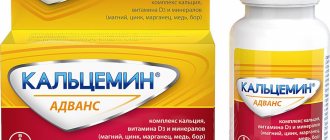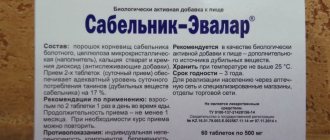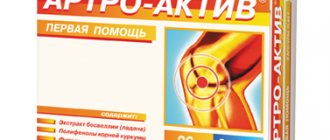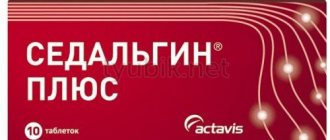Home | About us | Delivery | Advertisers | Login | Registration
Delivery on Sundays and holidays does not work!
- Medicines
- dietary supplementsVitamins
- Categories from A to Z
- Brands from A to Z
- Products from A to Z
- Medical equipment
- beauty
- Child
- Care
- Honey products appointments
- Herbs and herbal teas
- Medical nutrition
- Journey
- Making medicinesStock
Pharmacy online is the best pharmacy in Almaty, delivering medicines to Almaty. An online pharmacy or online pharmacy provides the following types of services: delivery of medicines, medicines to your home. Online pharmacy Almaty or online pharmacy Almaty delivers medicines to your home, as well as home delivery of medicines in Almaty.
my basket
Apteka84.kz is an online pharmacy that offers its customers medicines, medicinal and decorative cosmetics, dietary supplements, vitamins, baby food, intimate products for adults, medical equipment and thousands of other medical and cosmetic products at low prices. All data presented on the Apteka84.kz website is for informational purposes only and is not a substitute for professional medical care. Apteka84.kz strongly recommends that you carefully read the instructions for use contained in each package of medicines and other products. If you currently have any symptoms of the disease, you should seek help from a doctor. You should always tell your doctor or pharmacist about all the medicines you take. If you feel you need further help, please consult your local pharmacist or contact our GP online or by telephone.
© 2021 Pharmacy 84.
Instructions for use NEUROBEX
Combined preparation of B vitamins.
The combination of neurotropic B vitamins in Neurobex® is used to influence a number of important processes and functions of the body, mainly inflammatory and degenerative diseases of the nerves and musculoskeletal system. B vitamins are part of enzymes that catalyze metabolic reactions of carbohydrates, fats and proteins.
The physiological functions of vitamin B1 are multifaceted. After absorption in the body, it is converted into thiamine pyrophosphate, which is a cofactor for the enzyme carboxylase, which is involved in the decarboxylation of pyruvic and alpha-ketoglutaric acid. For this reason, vitamin B1 is intensively consumed when consuming carbohydrates. It is related to the activity of the nervous and neuromuscular system, facilitating the biosynthesis of the main mediator acetylcholine and suppressing the activity of the enzyme cholinesterase, which breaks it down. Vitamin B deficiency leads to the accumulation of lactic and pyruvic acid, which may result in the development of polyneuritis, beriberi disease, Wernicke encephalopathy and Korsakoff syndrome, polyneuropathy, cardiac dysfunction, gastrointestinal lesions (ulcerative colitis, chronic diarrhea).
The physiological functions of vitamin B6 as a coenzyme include inclusion in some metabolic transformations of amino acids - decarboxylation, transamination and racemization, as well as enzymatic transformations in the metabolism of sulfate-containing substances and hydroxyamino acids. It takes part in the conversion of tryptophan to 5-hydroxytryptamine in the synthesis of dopamine, norepinephrine, adrenaline, histamine and GABA. The conversion of methionine to cysteine also depends on the vitamin. It takes part in regulating the function of the liver and nervous system, and enhances erythropoiesis in some forms of anemia. Vitamin B6 deficiency is possible due to insufficient intake with food, impaired absorption in the intestine, when taking medications that are its antagonists, or during radiation therapy. Symptoms of deficiency are manifested by the appearance of seborrhea-like lesions around the eyes, nose, glossitis, stomatitis; peripheral neuritis, seizures (due to low concentrations of gamma-aminobutyric acid), very rarely anemia.
The physiological role of the active vitamin B12 coenzymes methylcobalamin and 5-deoxyadenosylcobalamin is essential for cell growth and replication. Methylcobalamin is necessary for the formation of methionine and its derivatives S-adenoylmethionine from homocysteine. It takes part in the processes of transmethylation and transfer of hydrogen cations during the synthesis of choline, methionine, creatinine and nucleic acids. Vitamin B12 plays an important role in hematopoietic processes (especially in the maturation of red blood cells). When the vitamin is deficient, methyltetrahydrofolate absorbs folate and leads to folate deficiency for other intracellular forms of folic acid necessary for red blood cell maturation. It has a beneficial effect on the functions of the liver and nervous system. Vitamin B12 deficiency is manifested by symptoms from the hematopoietic and nervous systems. Hematopoiesis becomes ineffective, and erythropoiesis becomes megaloblastic, and in severe cases pancytopenia develops. Irreversible damage can occur in the nervous system - demyelination, death of neurons in the spinal cord and cerebral cortex, which is manifested by paresthesia of the limbs, instability of gait, disturbance of some reflexes and, in a later stage, mental confusion, hallucinations, rapid mood swings, loss of memory, vision and even psychosis.
special instructions
Use during pregnancy or breastfeeding
The drug should be prescribed only after a careful assessment of the balance of benefit for the mother and the risk to the fetus, since there is insufficient data on the safety of the drug during pregnancy.
Vitamins B1, B6 and B12 are excreted into breast milk. Large concentrations of vitamin B6 may suppress lactation. Studies on the degree of secretion of vitamins into breast milk have not been conducted. The decision to discontinue breastfeeding or use of the drug must be made taking into account the need for the drug for the mother. If it is necessary to use the drug, you should stop breastfeeding for this period.
Children
The drug should not be prescribed to children.
Neurobeks p/o tablets in jars No. 90 No. 1
Name
Neurobeks tablet p/o in bank No. 90 in unitary enterprise No. 1
Main active ingredient
Pyridoxine + thiamine + cyanocobalamin.
Release form
Pills.
pharmachologic effect
Neurobex® is a combined preparation containing B vitamins. They are part of enzymes that catalyze metabolic reactions of carbohydrates, fats and proteins. A combination of B vitamins is used to influence a number of important processes and functions in the body and, mainly, inflammatory and degenerative diseases of the nerves and musculoskeletal system.
Indications for use
Indications for use Combined deficiency of vitamins B1, B6, B12. In the complex treatment of neurological and skin diseases and conditions associated with proven clinical or subclinical deficiency of vitamins B1, B6, B12, such as: nonspecific inflammatory and degenerative processes in peripheral nerves - neuritis, polyneuritis (alcoholic, post-infectious, toxic, diabetes); neuralgia, myalgia, paresthesia; dermatitis, eczema, psoriasis, acne vulgaris, atopic dermatitis.
Directions for use and doses
Neurobex® is taken orally during or after meals with water. The usual dose is 1-2 tablets 1-3 times a day for 30 days. The individual dose and duration of treatment are determined by the doctor. Elderly patients Usually no dose adjustment is required for elderly patients. Impaired renal function No dosage adjustment is required in patients with impaired renal function. Impaired liver function No dosage adjustment is required in patients with impaired liver function. If you have the impression that Neurobex® is too weak or too strong, consult your doctor or pharmacist. If you miss one dose of the drug, take it at your next regular dose without increasing the dose.
Use during pregnancy and lactation
There is no data on the negative effects of Neurobex on the fetus and child during pregnancy and lactation. Vitamins penetrate the placental barrier and are excreted from the body through breast milk. Due to the lack of sufficient information, the use of the drug is possible only if absolutely necessary, in recommended doses, as prescribed and under the supervision of a physician, after assessing the benefit/risk ratio, if the benefit outweighs the risk. It should be taken into account that in high doses, pyridoxine may interfere with the secretion of prolactin and should be used with caution in nursing mothers. Use in large quantities during pregnancy may lead to pyridoxine dependence syndrome in newborns.
Precautionary measures
Neurobex® should be used with extreme caution in patients with severe and acute forms of decompensated heart failure and angina. During treatment with this drug, you should not drink alcohol, since the ethanol it contains reduces the amount of vitamin B1 absorbed in the intestines. If the signs of the disease do not begin to subside, or, on the contrary, your health condition worsens, or if undesirable effects appear, consult your doctor for advice regarding further use of the drug! The tablets are not intended for use in children under 6 years of age, as this group of patients may have difficulty swallowing medications in the form of tablets and capsules.
Interaction with other drugs
If you are taking any other medications, be sure to inform your doctor about this, and if you are treating yourself, consult your doctor or pharmacist about the possibility of using the drug! Ethyl alcohol sharply reduces the absorption of vitamin B1. Vitamin B6 affects the metabolism of certain medications. Concomitant use of chloramphenicol, cycloserine, ethionamide, hydralazine, isoniazid, penicillamine, or immunosuppressants with pyridoxine may result in anemia or peripheral neuritis as these agents may act as pyridoxine antagonists or increase renal excretion of pyridoxine. Patients receiving these drugs may have increased requirements for pyridoxine. Concomitant use of estrogens may increase pyridoxine requirements. Concomitant use of levodopa with pyridoxine is not recommended because the antiparkinsonian effects of levodopa are reduced by oral pyridoxine in doses exceeding daily requirements. This problem does not arise if levodopa is combined with the peripheral decarboxylase inhibitor carbidopa. Serum levels of cyanocobalamin may be reduced by oral contraceptives. These interactions are unlikely to be of clinical significance. Antimetabolites and most antibiotics distort the results of vitamin B12 blood tests using microbiological methods. Para-aminosalicylic acid, colchicine, biguanides, neomycin, cholestyramine, potassium chloride, methyldopa and cimetidine may reduce the absorption of vitamin B12. Patients treated with chloramphenicol may respond poorly to cyanocobalamin.
Contraindications
Neurobex® is not used for: allergies to the active substances or any of the excipients in the composition of the drug; acute thromboembolism (blockage of a vessel by a blood clot); erythrocytosis and erythremia (blood diseases caused by an increase in the number of red blood cells).
Compound
Active ingredients in one coated tablet: Thiamine nitrate (vitamin B1) 15 mg, Pyridoxine hydrochloride (vitamin B6) 10 mg, Cyanocobalamin (vitamin B12) 0.02 mg. Excipients: lactose monohydrate, wheat starch, talc, magnesium stearate, colloidal silicon dioxide, povidone. Shell composition: collicoate protect (copolymer of polyvinyl alcohol and polyethylene glycol, polyvinyl alcohol, silicon dioxide), titanium dioxide, talc, cochineal red varnish E124. Information on excipients This medicinal product contains lactose as an excipient and should not be used in patients with lactase deficiency, galactose intolerance or glucose-galactose malabsorption syndrome. Due to the presence of wheat starch in the drug, it should not be taken by patients with an allergy to wheat (different from celiac disease). The medicine is suitable for patients with celiac disease (celiac disease). Dye E124, which is part of the drug, can cause allergic reactions.
Overdose
Symptoms: In case of overdose, the symptoms of side effects of the drug increase. Nervous excitement, tachycardia, and pain in the heart area may occur. Treatment: Treatment includes gastric lavage, administration of activated carbon, and the use of symptomatic agents. Isoniazid is an antidote to vitamin B6.
Side effect
Neurobex® is generally well tolerated. In rare cases, increased sweating, tachycardia, itching, and urticaria are possible. In isolated cases, allergic reactions may occur: rash, suffocation and anaphylactic shock. Severe sensory neuropathy has been described in patients taking high doses of pyridoxine (2 g to 6 g per day) for 2 to 40 months. Sensory peripheral neuropathy is also possible with prolonged use of daily doses of 200 mg or lower. If the listed adverse reactions occur, as well as reactions not listed in the instructions, you should consult a doctor.
Storage conditions
At a temperature not exceeding 25°C. Keep out of the reach of children!
Neurobex Neo capsules No. 10x10
Name
Neurobex Neo caps. in blister pack No. 10x10
Description
Black/orange gelatin capsules.
Main active ingredient
Pyridoxine+thiamine+cyanocobalamin
Release form
Capsules
Pharmacological properties
The combination of vitamins B, PP and C in Neurobex® Neo is used to influence a number of important processes and functions of the body and mainly on inflammatory and degenerative diseases of the nerves and musculoskeletal system, and provides increased needs of the body during infectious diseases, after chemotherapy and radiotherapy. All active components of the drug are quickly absorbed in the small intestine and distributed throughout the body. They are excreted mainly in urine. Since all the vitamins of Neurobeks Neo are water-soluble, they do not accumulate in the body.
Indications for use
The drug Neurobeks Neo is used in the treatment of neurological disorders caused by vitamin deficiency, which cannot be eliminated by correcting nutrition.
Directions for use and doses
The drug is taken 1 capsule 1 time per day during or after meals, without chewing, with a sufficient amount of liquid. The duration of treatment is determined by the doctor. If symptoms persist for 4 weeks during treatment, you should consult a doctor. If you forget to take Neurobex® Neo, take the capsule as soon as possible before it is time for your next dose. If it is time for your next dose of medication, do not take the missed dose. Do not double the dosage of the drug to compensate for the missed one! Next, the drug is used according to the recommended dosage regimen.
Use during pregnancy and lactation
During pregnancy and lactation, the recommended daily dose for vitamin B1 is 1.4-1.6 mg and vitamin B6 is 2.4-2.6 mg. During pregnancy, these doses can only be exceeded after a careful assessment of the benefit/risk ratio, since the safety of using vitamins B1 and B6 above the recommended daily dose has not yet been proven. Vitamin B1, B6 and B12 pass into breast milk. Taking high doses of vitamin B6 may inhibit milk production. The use of this drug during pregnancy and lactation is possible only after a careful assessment of the risk-benefit ratio.
Impact on the ability to drive vehicles and operate equipment
The drug does not affect the ability to drive a car or use equipment.
Precautionary measures
It should be used with extreme caution in patients with severe and acute forms of decompensated heart failure and angina. The drug is not recommended to be prescribed together with other medications that contain vitamins, since an overdose of the latter in the body is possible. Patients prone to hyperoxaluria, due to the possible increase in oxalate excretion, are not recommended to take ascorbic acid in a dose of more than 1 g. Increased intake of ascorbic acid over a long period may lead to an increase in the renal clearance of ascorbic acid with subsequent development of deficiency with a decrease in intake or quick cancellation. When conducting tests (determination of glucose, creatinine, uric acid in urine), it is necessary to take into account the possibility of the influence of ascorbic acid on obtaining distorted test results. The use of high doses of ascorbic acid can lead to false-negative results when determining occult blood in the stool. The use of Neurobex Neo is not recommended for children (it is recommended to use Neurobex tablets).
Interaction with other drugs
Ethyl alcohol sharply reduces the absorption of thiamine. Thiamine is inactivated by 5-fluorouracil as a result of the latter's competitive inhibition of thiamine phosphorylation. Long-term treatment with furosemide may increase renal excretion of thiamine. Vitamin B6 affects the metabolism of certain medications. High doses of vitamin B6 reduce the antiparkinsonian effect of levodopa. This vitamin enhances the peripheral decarboxylation of levodopa and thus reduces its effectiveness in the treatment of Parkinson's disease. It is an antagonist of isoniazid and thiosemicarbazones, correcting sideroblastic anemia caused by these anti-tuberculosis drugs. Long-term use of penicillamine can lead to the development of vitamin B6 deficiency. Hydralazine and cycloserine are also its antagonists, and the simultaneous use of the vitamin with them reduces the adverse neurological reactions caused by these drugs. The amount of vitamin B6 decreases when taken simultaneously with oral contraceptives. Colchicine, ethyl alcohol and neomycin inhibit the absorption of vitamin B12. Oral antidiabetic drugs of the biguanidine type, p-aminosalicylic acid, as well as chloramphenicol and vitamin C interfere with the absorption of the vitamin. Vitamin C increases the half-life of paracetamol, increases the rate of iron absorption and increases the renal excretion of amphetamine. Plasma ascorbate concentrations decrease with smoking and oral contraceptives. In renal failure, oral vitamin C increases the absorption of aluminum, the concentration of which can reach toxic levels. The simultaneous use of aluminum hydroxide and ascorbic acid may provoke an increase in aluminum absorption in patients with normal renal function. Concomitant use of ascorbic acid with amygdalin (alternative medicine) may result in cyanide toxicity. Ascorbic acid can be used in conjunction with deferoxamine to increase iron excretion. However, in the early stages of treatment, when there is excess iron in the tissues, there is some evidence that ascorbic acid may increase iron toxicity, especially in the heart. Therefore, ascorbic acid should not be prescribed within the first month after starting deferoxamine treatment.
Contraindications
- Hypersensitivity to the active substances or to any of the excipients in the drug.
- Acute thromboembolism.
- Erythrosis and erythremia.
- Hyperoxaluria.
- Glucose-6-phosphate dehydrogenase deficiency.
- Malignant tumors.
Compound
Active ingredients in one capsule, mg: Thiamine nitrate 50 Riboflavin 25 Pyridoxine hydrochloride 10 Cyanocobalamin 0.005 Nicotinamide 100 Calcium pantothenate 25 Folic acid 0.5 Ascorbic acid 175 Excipients potato starch, aerosil, talc, magnesium stearate, anhydrous calcium hydrogen phosphate and gelatin new capsule ( gelatin, ponzo 4P (E124), quinoline yellow (E104), sunset yellow (E110), titanium dioxide (E171), brilliant black (E151))
Overdose
A single dose of vitamin B6 less than 500 mg is safe. Overdose may lead to a decrease in serum folate concentrations. With long-term use, at a dose of 200 mg per day, sensory neuropathy is possible. Acute overdose of nicotinamide is not accompanied by serious side effects, but transient liver dysfunction may occur. Large doses of vitamin C can cause diarrhea and the formation of oxalate stones in the kidneys. In case of an overdose, the symptoms of side effects of the drug increase. Nervous excitement, tachycardia, and pain in the heart area may occur. Treatment includes gastric lavage, administration of activated carbon, and the use of symptomatic agents.
Side effect
Neurobex® Neo is generally well tolerated. In rare cases, increased sweating, tachycardia, itching, urticaria are possible; in isolated cases, allergic reactions, rashes, suffocation and the development of anaphylactic shock are possible. Significant doses of vitamins included in the drug can change the color of urine and change some laboratory parameters during urine analysis. The development of photosensitivity has been reported when using high daily doses of B vitamins. From the digestive system: nausea, vomiting, discomfort in the stomach. High doses of ascorbic acid can cause diarrhea and hyperoxalaturia. Ascrbic acid may cause the development of hemolytic anemia in some patients with glucose-6-phosphate dehydrogenase deficiency. If side effects occur, tell your doctor. This applies to all possible side effects, including those not described in this leaflet.
Storage conditions
At a temperature of 15-25°C in a place protected from light and moisture. Keep out of reach of children. The drug should not be used after the expiration date indicated on the package. Shelf life – 3 years from the date of issue.
Compound
Active ingredients: thiamine nitrate (vitamin b1), pyridoxine hydrochloride (vitamin b6), cyanocobalamin (vitamin b12)
1 tablet contains:
- thiamine nitrate (vitamin B1) - 15 mg;
- pyridoxine hydrochloride (vitamin B6) - 10 mg;
- cyanocobalamin (vitamin B12) - 0.02 mg.
Excipients: lactose, wheat starch, talc, magnesium stearate, silicon dioxide, povidone, Kollicoat Protect, titanium dioxide (E 171), Ponceau 4R (E 124).
Contraindications
Hypersensitivity to thiamine nitrate, pyridoxine hydrochloride, cyanocobalamin and any other components of the drug.
- Vitamin B1 is contraindicated for use in allergic diseases.
- Vitamin B6 is contraindicated for use in cases of gastric and duodenal ulcers in the acute stage (since it is possible to increase the acidity of gastric juice).
- Vitamin B12 is contraindicated for use in cases of erythremia, erythrocytosis, and thromboembolism.
B vitamins in the treatment of acute back pain: myth or reality?
Significant changes are taking place in the treatment of acute back pain. The main difference is the abandonment of strict immobilization of patients and the transition to rapid activation with the help of physical therapy. In this case, one of the conditions for successful therapy is pain relief, starting from the first day of the acute period. Traditionally, simple analgesics (Aspirin, Paracetamol), nonsteroidal anti-inflammatory drugs (NSAIDs), muscle and epidural blockades are used for this. Along with these approaches, combination vitamin preparations containing thiamine (vitamin B1), pyridoxine (vitamin B6) and cyanocobalamin (vitamin B12) have proven to be quite popular in the relief of acute pain.
Interest in the widespread use of a combination of B vitamins for pain came from practice. Since 1950, in many countries they began to be considered as analgesics. It is well known that B vitamins are neurotropic and significantly affect processes in the nervous system (metabolism, metabolism of mediators, transmission of excitation). In domestic practice, B vitamins are used very widely. Clinical experience shows that parenteral use of a combination of thiamine, pyridoxine and cyanocobalamin relieves pain well, normalizes reflex reactions, and eliminates sensitivity disorders. Therefore, for pain syndromes, doctors often resort to using vitamins of this group in combination with other drugs.
The popularity of B vitamins for acute back pain is also associated with other aspects. When working with patients suffering from such pain, one often encounters certain difficulties. Firstly, these are various complications of pharmacotherapy. The use of numerous NSAIDs is often rejected by patients themselves due to side effects, mainly from the gastrointestinal tract. Secondly, if any drug is ineffective, it is necessary to prescribe drugs from several groups simultaneously, which increases the risk of side effects and also, as a rule, increases the cost of treatment. Thirdly, many patients have contraindications to various pain-relieving physiotherapeutic procedures (electrotherapy, magnetic therapy, thermal procedures, etc.). Often, due to pain, they cannot leave the house, and accordingly, carrying out any procedures outside the home is excluded. In addition, it is not always possible to carry out the necessary muscle or epidural blockades due to the lack of appropriate conditions or specialists.
More than 90 studies have been published indicating clinical improvement with the use of B vitamins in patients with acute back pain [1–5]. However, many questions remain regarding the use of a combination of B vitamins in the treatment of acute back pain. How can B vitamins help with acute pain? What is their mechanism of action? How quickly does the effect occur? How safe is the combination of these vitamins? Can they be combined with NSAIDs? Is this combination treatment more effective than monotherapy?
The purpose of this work was a randomized, open-label comparative study of the effectiveness of Milgamma, diclofenac and their combination in the treatment of acute pain in the low back. The drug Milgamma is available in ampoules of 2.0 ml. One ampoule contains 100 mg of thiamine hydrochloride, 100 mg of pyridoxine hydrochloride, 1000 mcg of cyanocobalamin and 20 mg of lidocaine. The difference between Milgamma and other vitamin preparations is its release form: one ampoule contains large doses of vitamins B1, B6 and B12 in combination with a local anesthetic. A decisive role in the combined use of B vitamins is played by the fact that the areas of application of B vitamins overlap and complement each other.
The study included 60 patients suffering from acute back pain. Inclusion criteria were acute back pain with an intensity of at least 6 points on the visual analogue scale (VAS). Exclusion criteria were: cancer; back pain caused by pathology of the abdominal and pelvic organs, compression of the spinal cord. All patients were divided into three groups. The first group (“M”) included 20 patients who received 2.0 ml of the drug Milgamma for a period of up to 10 days, the second group (“D”) included 20 patients who took diclofenac 75 mg intramuscularly for the same period per day, the third group (“M + D”) also consisted of 20 people who received daily injections of Milgamma (2.0 ml) and diclofenac (75 mg). The drug diclofenac was chosen for comparison as the most popular painkiller from the NSAID group, widely used in our country to relieve back pain. No other pharmacological drugs and/or physical procedures were prescribed to patients of all three groups. Treatment was carried out on an outpatient basis. The maximum duration of drug use was 10 days. If the pain syndrome was completely eliminated before this period, treatment was stopped.
The average age in the “M” group was 42.8 ± 9.9 years, in the “D” group – 40.0 ± 9.8, in the “M + D” group – 43.1 ± 10 years. In the “M” group there were 40% men and 60% women, in the “D” and “M + D” groups, respectively, 30% men and 70% women. Thus, the study groups were comparable in age and gender (p > 0.15).
The study used clinical neurological analysis, neuroimaging (MRI, CT, radiography), VAS to assess the intensity of pain (daily), a scale of patient impressions of the effectiveness of therapy, and analysis of side effects of drugs. Statistical analysis was carried out using parametric and nonparametric statistical methods (Statistica 5.0 program).
results
The pain syndrome was represented predominantly by muscle-tonic disorders in all groups (100% in all groups). Radicular pain due to discogenic compression was noted: in groups “M” and “D” - 10% each, in group “M + D” - in 20% of cases. At the same time, intervertebral disc herniation was detected on MRI: in the “M” group – in 10% (L5-S1), in the “D” group – in 20% (L5-S1), in the “M + D” group – in 20% cases (L4-L5, L5-S1). Osteochondrosis occurred in 95% of cases, in group “D” - in 100%, in group “M + D” - in 95% of cases.
The intensity of pain according to the VAS scale in the compared groups before treatment did not differ significantly. In groups “M” and “D” there was a statistically significant decrease in pain intensity on the VAS scale, starting from the second day of therapy and its subsequent highly significant decrease throughout the course of treatment (p < 0.001). In the “M + D” group, a significant reduction in pain was noted already from the first day of therapy. Comparing the overall effectiveness of treatment in the studied groups, one can note a significant and consistent reduction in pain during all days of therapy (Table 1).
To assess the dynamics of pain reduction, an analysis was carried out of changes on the VAS scale as a percentage in relation to the intensity of pain before treatment, taken as 100%. By the 3rd day of treatment, all groups achieved a clinically significant reduction in pain for patients (by more than 30%). It should be noted that the greatest changes (reduction of pain) were observed during the first 3 days, but these differences did not reach the level of significance.
There is a widespread belief among doctors that diclofenac is more effective than Milgamma for very intense pain. To test this hypothesis, we compared the effectiveness of treatment in three groups in patients with an initial pain intensity of 8–10 points on the VAS scale. When analyzing the dynamics of pain regression in these patients (8–10 points on the VAS scale), a significant decrease in pain intensity was observed in all groups within the first 5 days. However, if we evaluate the degree of pain relief by days of therapy, we should note a positive effect on the first day of therapy in the “M + D” group (p < 0.05), while in the “M” and “D” groups a significant reduction in pain was observed only with the second day of treatment (Table 2).
In our work, we analyzed the number of patients with varying degrees of pain regression: with complete relief by 100%, with regression by 50 and 30%, depending on the duration of therapy. It should be emphasized that a 30% reduction in pain is considered a clinically significant improvement. On the second day of therapy, clinically significant improvement was noted by 11 people in the “M + D” group, which is significantly more than on this day in the “M” and “D” groups (p < 0.05). In the M + D group there were more patients with complete pain relief during the first 5 days of treatment. However, it can be noted that starting from the 4th and 5th days of treatment, the number of patients with pain regression of more than 30% was approximately the same in the three groups.
Patients were also asked to independently evaluate the analgesic effect of the drugs on a scale of subjective impressions (Table 3). In general, following the results of 10 days of treatment, complete pain relief was noted by 45% of patients in group “M” and 35% of patients in group “D”, however, the largest number of patients with complete regression of pain was in group “M + D” (70%). The fact that pain decreased slightly was reported by 10% of patients taking diclofenac or Milgamma alone. In the group of patients receiving diclofenac, one person had pain that persisted throughout 7 days of treatment and the patient was hospitalized.
During treatment, a number of patients experienced adverse reactions: nausea, abdominal discomfort, stomach pain, diarrhea. Analysis of adverse reactions showed that most of them are associated with taking diclofenac. Their number was significantly higher in the group of patients taking diclofenac (35%), slightly lower in the group using two drugs (25%) and least in the group of patients receiving Milgamma (5%, p < 0.05, urticaria in one patient on the 7th day of therapy). Due to side effects, 20% in the “D” group (10% after the 5th injection, 10% after the 7th injection), 15% in the “M + D” group (after 5 days of treatment) abandoned therapy. 5% - in group “M” (after the 7th injection). Thus, a significantly larger number of patients discontinued treatment due to side effects associated with the use of diclofenac.
Discussion
With a normal and varied diet, the body receives enough vitamins to prevent any vitamin deficiency. With the advent of synthetic vitamins, a person can receive in one dose of the drug the amount of vitamins that comes from food throughout the year. However, at these pharmacological doses, vitamins should be considered as drugs. And what is very important is that at such doses the mechanism of action often differs from the well-known physiological effects of “natural” vitamins [6].
There are two groups of disorders for which vitamin therapy is unconditionally indicated. The first is vitamin deficiency conditions (beriberi disease, gout, alcoholism, malabsorption, cystic fibrosis, etc.). The second is genetic defects in vitamin metabolism. Moreover, both of these groups of vitamin deficiency conditions serve as the basis for only a very small part of all prescriptions of vitamin preparations. In medical practice, B vitamins are most often prescribed as adjuvants for conditions not accompanied by vitamin deficiency: pain syndromes, psychoses, asthenia, tunnel syndromes, alopecia. Very often, good treatment results are achieved. However, it remains unclear in which cases the positive effect is associated with the action of vitamins, and in which it may be random or due to placebo.
However, clinical and experimental studies are currently underway on the use of vitamins as active drugs, with new mechanisms of action [7–9]. Experimental work studying the effects of a combination of vitamins B1, B6 and B12 on pain showed inhibition of nociceptive responses caused by formaldehyde, which did not change after administration of naloxone. It has been suggested that the antinociceptive effect of the combined vitamin complex may be due to inhibition of synthesis and/or blocking the action of inflammatory mediators [7]. Many studies emphasize that both combination and separate use of vitamins B1, B6 and B12 have an analgesic effect. It has been shown that the B complex of vitamins enhances the effect of norepinephrine and serotonin, the main antinociceptive neurotransmitters. In addition, the experiment revealed suppression of nociceptive responses not only in the dorsal horn, but also in the thalamus optica [8].
Despite the fact that there are no large evidence-based studies in this regard, practice shows that B vitamins in large doses do have analgesic properties, and can also enhance the analgesic effects when used simultaneously with simple analgesics or NSAIDs. Positive results have been obtained in the treatment of both musculoskeletal and neuropathic pain [9]. In particular, there are studies showing the effectiveness of vitamin B6 in carpal tunnel syndromes. There are indications that B vitamins enhance analgesia when used concomitantly with diclofenac for acute back pain, which may shorten treatment time and reduce dosages of diclofenac, thus reducing the risk of side effects [10–13].
The results obtained in our work confirmed the effectiveness and safety of the combined drug Milgamma in the treatment of acute back pain. A reliable analgesic effect is observed from the second injection of the drug. The effect of Milgamma, a drug not related to analgesics, turned out to be comparable to diclofenac, a “classical” pain reliever. This may indicate that the combination of B vitamins in Milgamma has a clear analgesic mechanism of action and is not the result of the usual traditional physiological effects of these vitamins. We think this provision is very important, since there is a widespread opinion among doctors that the use of B vitamins for acute pain is ordinary vitamin therapy aimed at “strengthening the nervous system.” Taking into account the new experimental data mentioned above, we can expect that in the future the analgesic properties will be studied in more detail and the mechanisms of action of large doses of B vitamins on humans will be clarified.
In our study, side effects and complications during and after the end of therapy were associated with diclofenac. In the group of patients taking this drug, a high percentage of side effects was obtained (35%), which, unfortunately, indicates that its level is not high enough.
As for combination therapy, it turned out to be more effective than monotherapy in terms of the dynamics of pain regression. A faster and more pronounced reduction in pain in the first days of therapy has been shown, which is very important especially for intense pain. It is likely that combination therapy shortens the treatment period, and also makes it possible to discuss the use of lower doses of NSAIDs when combined with Milgamma. The combination of Milgamma with diclofenac can be recommended for very high pain intensity for its rapid relief in the first days of treatment. It should be noted that the effectiveness of Milgamma monotherapy for intense pain was not inferior to diclofenac, and this fact, taking into account the better safety profile, allows us to classify the drug as universal for both mild and severe pain.
conclusions
The study confirms clinical experience of the high effectiveness of a combination of B vitamins in the treatment of acute back pain.
Monotherapy with Milgamma for acute back pain is accompanied by a significant decrease in the intensity of the pain syndrome from the second day and throughout the entire course of treatment with a virtual absence of undesirable side effects.
Milgamma is an effective pain reliever for both moderate and high intensity pain.
Treatment of acute back pain with diclofenac is effective, but in a third of cases it is accompanied by unwanted side effects, which should be taken into account when choosing medications.
Combination therapy with diclofenac and Milgamma provides a more pronounced analgesic effect than monotherapy (with Milgamma or diclofenac); a pronounced positive effect is observed already on the first day of therapy, which is important to consider if urgent pain relief is necessary.
It is likely that combination therapy (NSAIDs + B vitamins) will allow the use of lower doses of NSAIDs in order to prevent unwanted side effects. when maximum pain relief is achieved.
With a treatment duration of 7–10 days, combination therapy has no advantages over monotherapy with Milgamma or diclofenac in terms of the final result, however, monotherapy with Milgamma is better tolerated and safer.
The drug Milgamma in injections should be considered not as a component for the treatment of vitamin deficiency conditions or a general strengthening agent, but as an active agent, with special, not yet sufficiently studied, but obvious analgesic properties.
For questions regarding literature, please contact the editor.
A. B. Danilov , Doctor of Medical Sciences, Professor of MMA named after. I. M. Sechenova, Moscow







